DC42 IR height sensor inconsistent mesh
-
Hi,
I've got an Ender-6 with stock Creality 4.3.1 mainboard running Klipper off a raspberry pi 3b+, with a Biqu H2 V2S extruder and a clone of @dc42 's IR differential height sensor.
My printer isn't running a Duet or any related hardware except the IR height sensor, but there's so little information available elsewhere about troubleshooting the sensor that I figured I'd post here asking for any possible advice to help with the issues I'm having.It seems to be working correctly in every way that I can tell, it's in digital mode (two LED blinks) and when probing the same place multiple times the height readings are incredibly consistent, within less than 0.01 mm.
However, when I try to actually create a mesh with it, I get a jagged, mountainous mess:
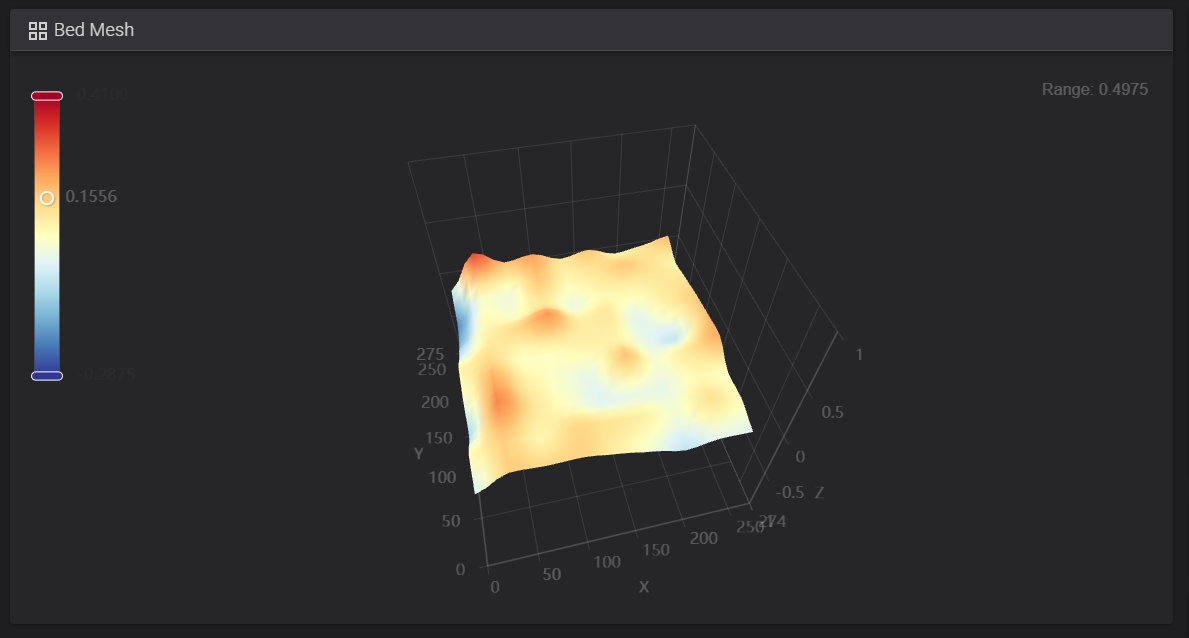
That mesh is a 9x9 with a piece of black G10 as a bed surface, 3mm/s probe speed.
Thinking it must be due to changes in reflectivity due to the imprint left by previous prints, I went over the whole bed surface with 180-grit on an orbital sander, and got a very similar result, or maybe even worse:
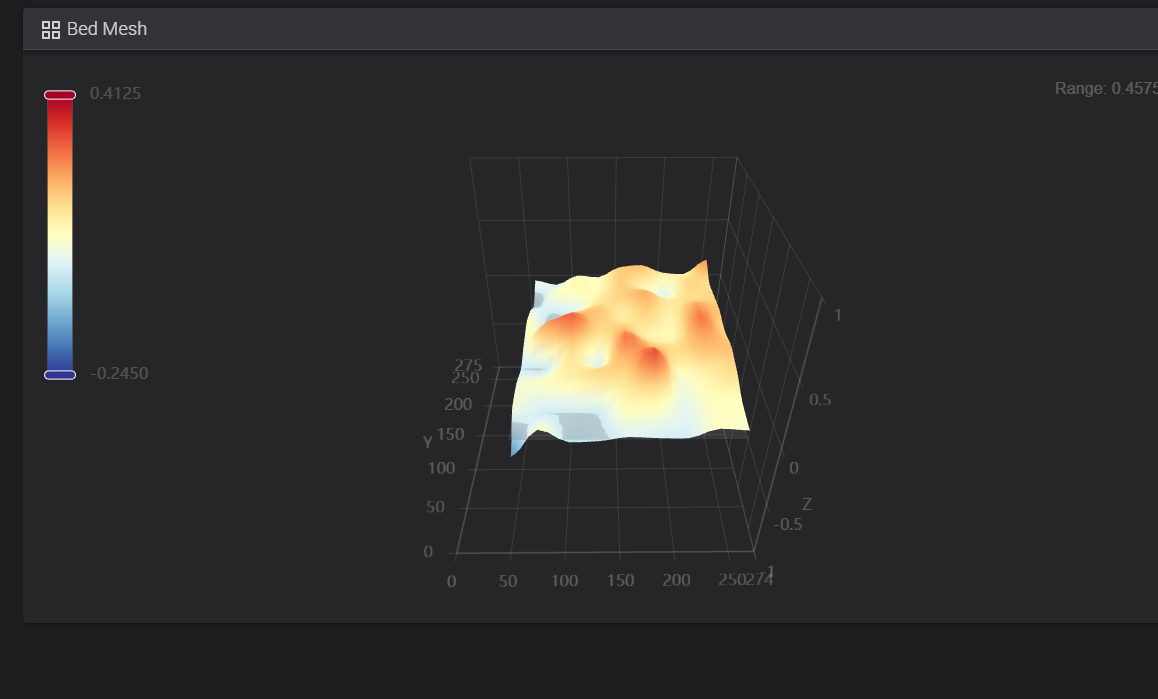
Thinking it may be a rigidity issue due to the mounting location, I remounted the sensor directly to the stepper motor:
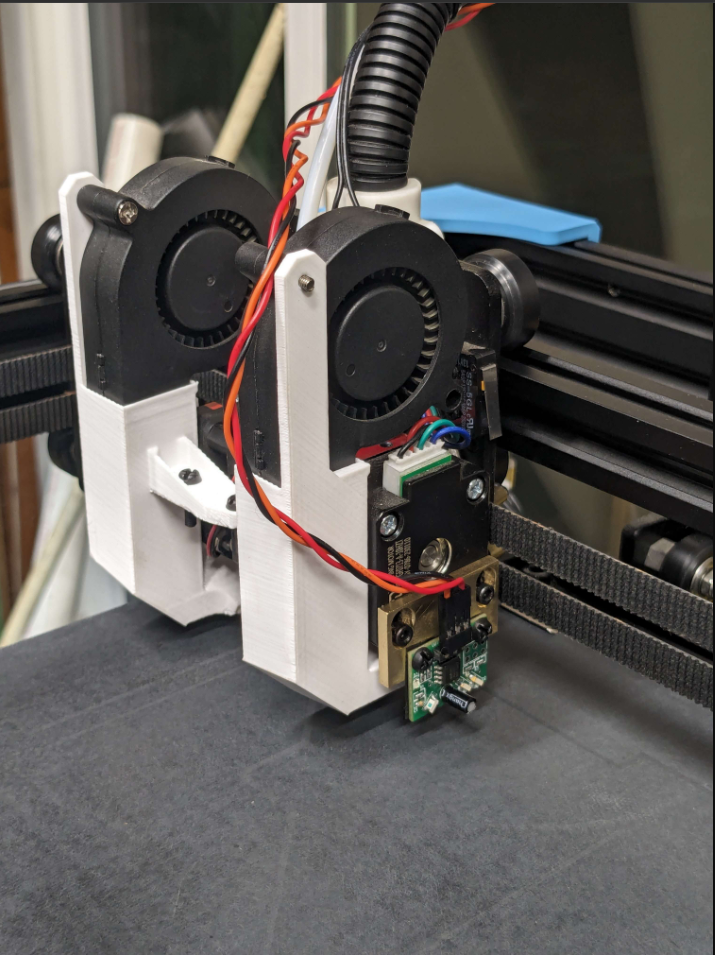
At someone else's suggestion I applied hairspray to the build plate in an attempt to give it an even more uniform surface:
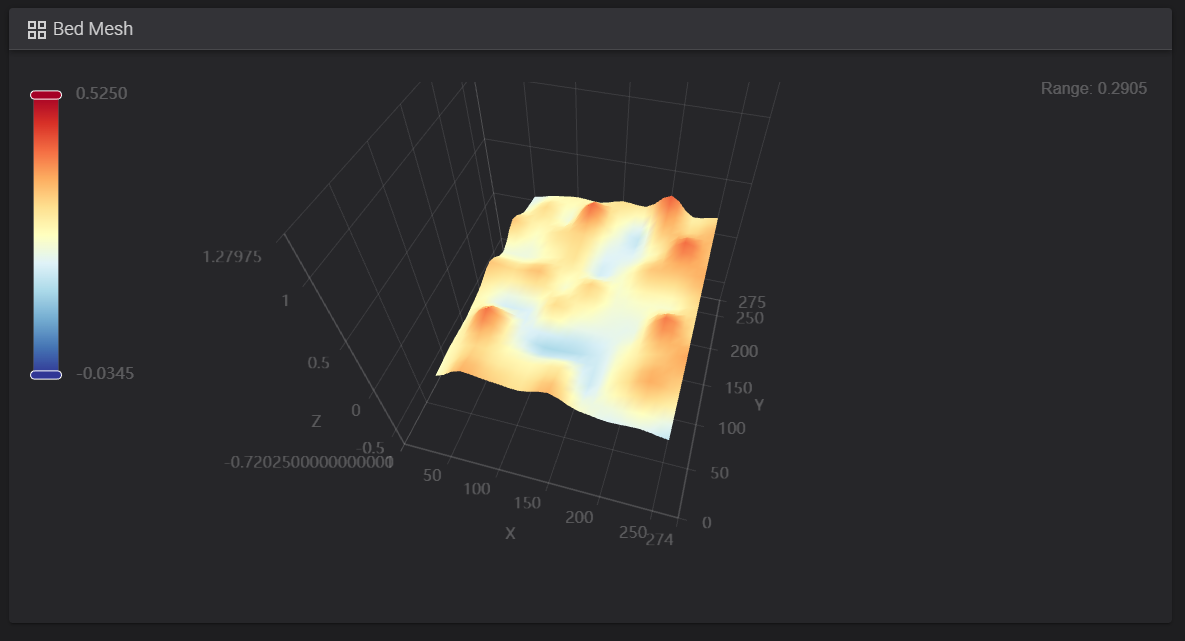
In desperation, I did a 20x20 point grid with 5x averaging on every point, only to see this monstrosity:
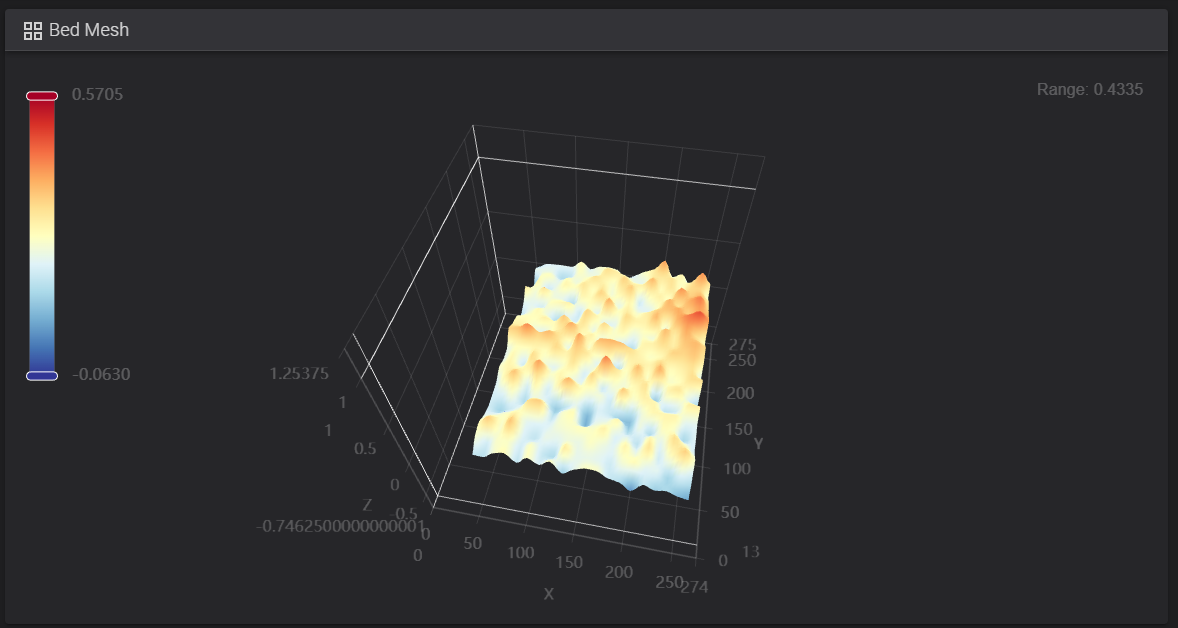
Somebody please help, I feel like I'm just running in circles at this point.
-
@mysticaldork The probe is pretty far away from the nozzle, so any tilt or wobble from your v-rollers would scale up a lot.
I've also seen fake openbuild extrusions, where their v-shape doesn't fit the rollers at all. That's another error source. -
the photo already shows grooves cut into the v rollers from too much tension. It's quite likely that the motion system is in bad shape.
-
The motion system is definitely not perfect, but I've also checked the motion of the nozzle relative to the bed using a dial indicator and while it is definitely showing some influence from external forces (rollers, cable umbilical pushing the carriage around) as well as some warping of the bed, it isn't jagged like the sensor is showing.
-
I also just tried another mesh with a piece of painted glass, and it's working perfectly. Guess IR light and G10 aren't compatible, because it's working perfectly well with the different surface.
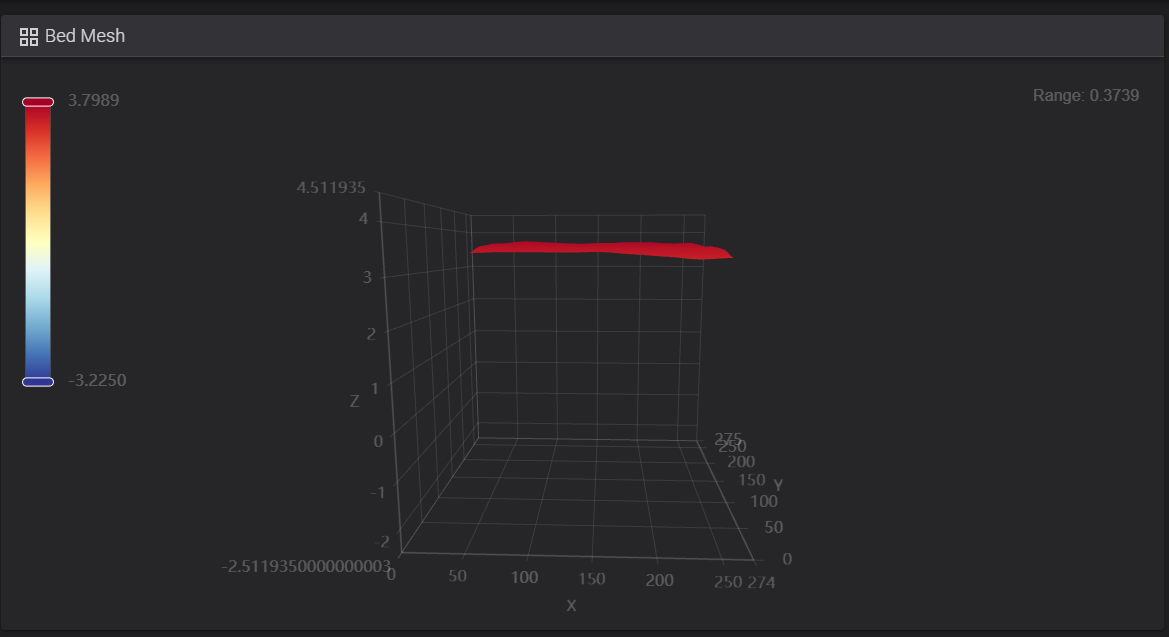
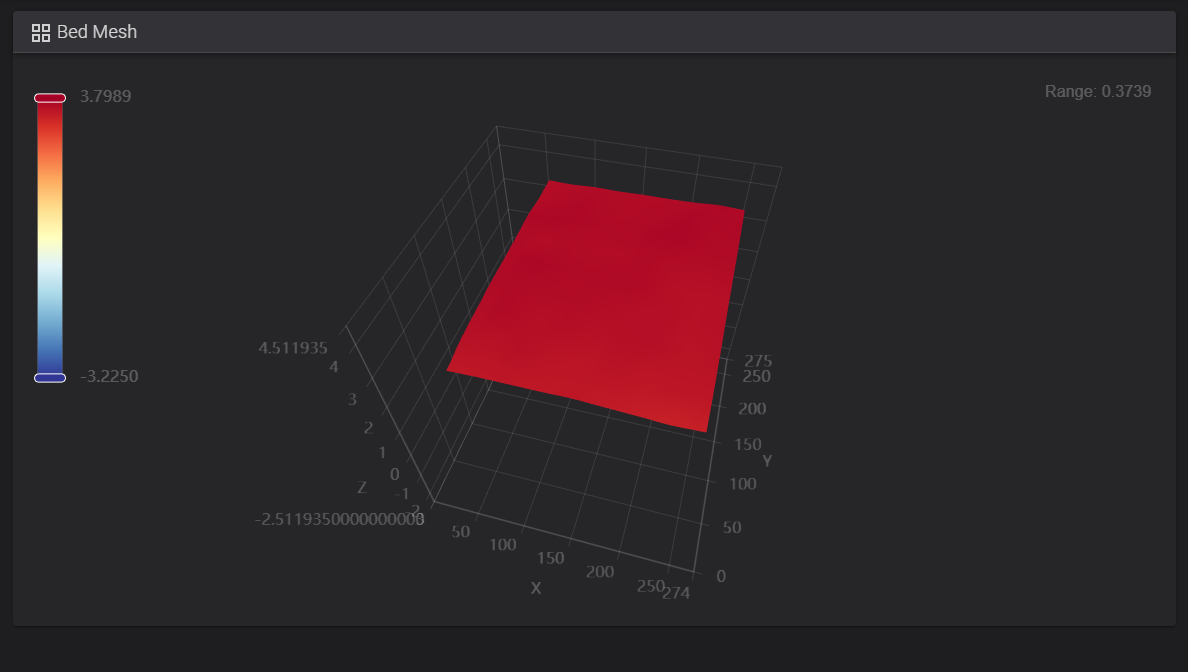
-
@mysticaldork You'd have to adjust the new probe height to the added thickness of the glass plate to get a realistic result.
All I see is a heightmap totally out off range. Hence the uniform colouring -
@o_lampe Oh I know it's way too high, but look at the actual shape of it, not just the color, especially from the edge. The scaling is the same as the previous meshes.
It is decidedly not flat, it has a noticeable bow and a drop-off towards the front, but it isn't jagged. The jagged inconsistent readings were an issue with the G10 all along. I suspect that the IR is getting subsurface reflections off of the glass fiber layers inside the sheet.
-
you could try roughing up the G10 surface with some 80 grit sand paper. that should result in more uniform top surface reflection.